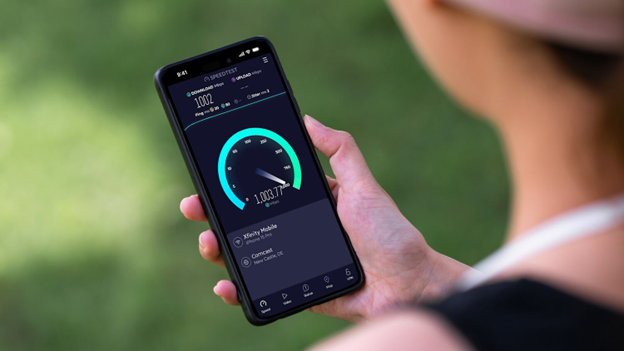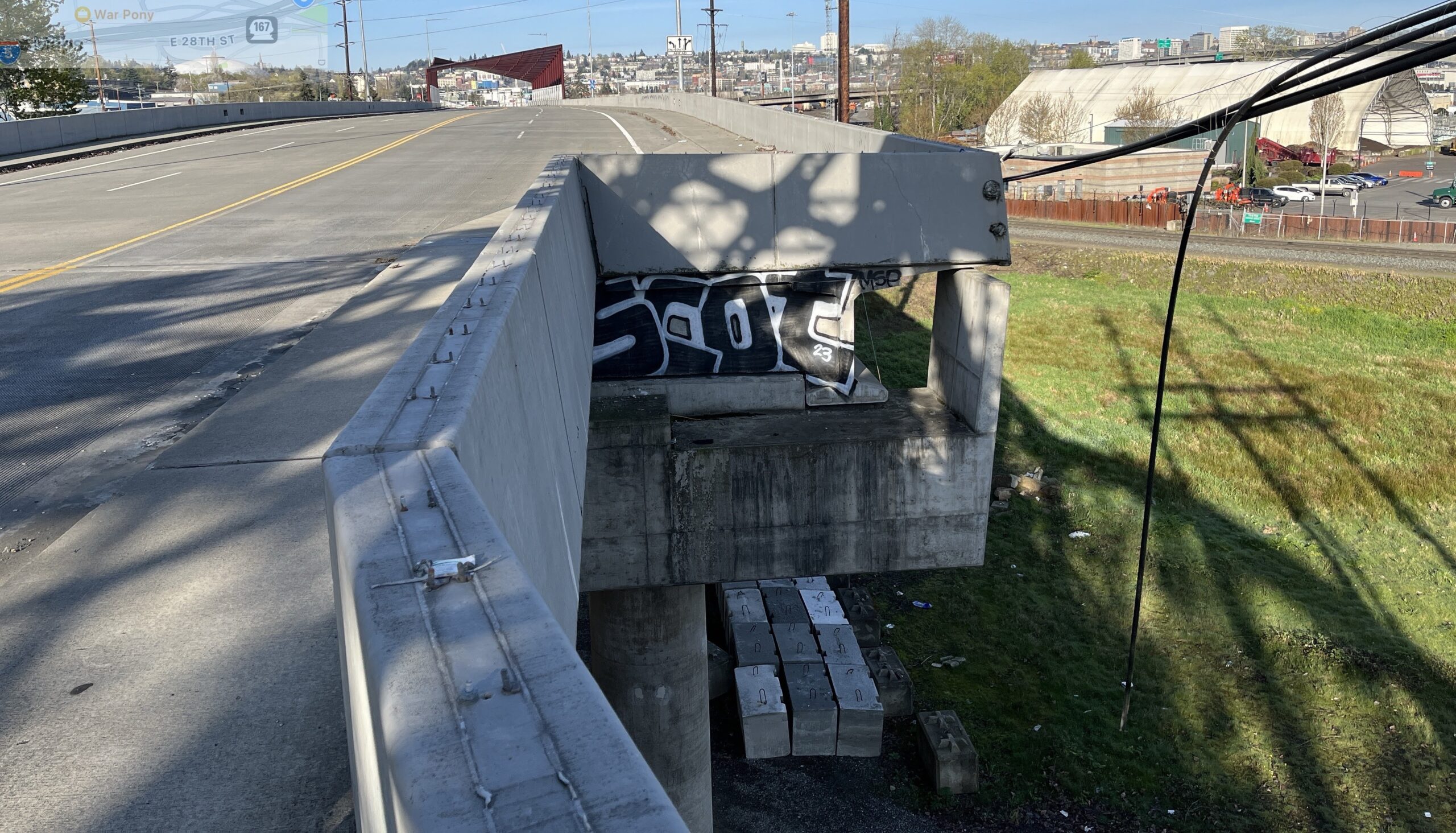[youtube=http://www.youtube.com/watch?v=ssPLgn5ZG9k]
After years of being “the customer,” I finally had a chance to follow a cable technician to see what it’s like on the inside of the cable business. I learned that cable technicians aren’t just “cable guys.”
My name’s Katelin Chow, and I’m a junior at the University of Washington and have been interning with Comcast for three summers through the Emma Bowen Foundation, a program for minorities interested in media. Even though I’ve been with the company for a while, I never had the opportunity to look “behind-the-scenes” and tag along with a technician until now.
It’s 7:30 a.m. on Wednesday morning and I’m in Comcast’s Seattle office, looking around at the giant garage-like building.
Jon Peterson, a technical operations supervisor, hands me a hard hat and reflector-vest, laughing: “The vest is probably gonna be too big for you, but it’s the smallest size we’ve got.”
“What size is it?” I ask, accepting the helmet and vest.
“Extra large. Now try on the hat. Does it fit?” He laughs again as I put on the hard hat. “Wear it proud!”
For the rest of the day I’ll be following Anthony—better known as Tony—Norton, who’s been working with Comcast as a technician for almost a year. Like a lot of other CommTechs, Tony keeps a “10-40” schedule, meaning he works four-10 hour shifts each week.
As he explains his work days to me, I wonder what it’s like to balance working long hours on weekends with having a family. He’s from DesMoines, Washington, and has two kids (a daughter, who tells me, is incredibly neat and organized; and a son, who he says is a typical “boy”).
He’s got a stocky build and towers over my 5’0” frame. Later, as I watch him hoist foot ladders over his shoulders, I understand that the job as a CommTech isn’t for the weak-of-body—it’s a physically-trying job that requires the technicians to climb ladders to 20 foot heights and lug around heavy equipment.
* * *
Tony and I are in the van, making our way to the first call of the day. As he “pre-calls” the first customer to let him know we’re on our way—a standard procedure that makes sure customers are expecting us—Tony tells me that this job is a lot about time management. There’s a two-hour window customers sign up for to have the technicians come out to their homes, which is backed up by the Comcast Customer Guarantee. So that means if the technician doesn’t arrive for a scheduled visit during the appointment window, Comcast will credit $20 to the customer’s account.
We’re in and out of the first house in less than an hour after Tony replaces the cable modem and checks to make sure that everything’s working properly. By the end of the day, I call this process–with the fancy gadget and the cords and the whirring machines—“checking the vitals” because it’s reminiscent of a doctor’s visit. Tony looks at the machine’s readings and makes adjustments to the cables accordingly—the way he talks about the numbers and the readings (“plus seven, minus nine, fifty from this end”) makes my head spin.
The second visit throws a curveball our way. As soon as Tony and I arrive on the scene, he notices that a cable is running through a windowsill, which he says is unsafe. It’s a time-consuming surprise that puts us a little behind schedule—there are cables wrapped around tree branches and hanging loosely from the pole.
After he helps the customer with their television issue, Tony surveys the cable situation outside. He decides that he’ll have to climb the pole to re-run the cable line. Unfortunately, the pole is wedged in a grouping of trees and bushes, which makes it dif ficult to get a ladder into the area. But still, Tony carries the ladder to the pole and tries setting it up, to no avail.
So we wait for back up. Tony says he always tries to resolve the issue himself, but sometimes, technicians just need help in order get the job done correctly and safely.
* * *
When we finally get to the third appointment, Tony realizes that he’ll have to climb yet another ladder and pole in order to check that the cables are in working order. As he’s standing 20 feet in the air, hooked to the ladder which is hooked to the cable, I find myself feeling sympathy pains for him: The guy has already spent the first part of the day on a ladder, and now he’s up there again—but this time, the mid-afternoon sun’s beating down on him.
He must be exhausted, I think to myself as my stomach growls so loud that the customer, a man in his thirties, sympathetically offers me a bite to eat.
“No thanks,” I tell the customer as we both crane our necks to watch Tony. Hopefully, Tony and I will be able to grab some lunch before the next call—but with the busy schedules, I wonder if we’ll even have time to do that.
Luckily, Tony figures out the situation fairly quickly. He circles the house a few times and sees that there’s a wire interfering with Comcast’s cables. Tony swaps out the cables in less than ten minutes, steps inside the house to check the Internet connection—it’s good!
After Tony hands his business card to the customer—something he always does, so that customers can call him directly should they have any questions—we’re back on the road, with enough time to grab a bite to eat.
* * *
Once we wolf down our sandwiches—I never thought that eating in a sandwich shop could feel like 15 minutes of air-conditioned bliss—we hit the road again.
On our way to the last appointment, Tony makes one quick stop because he wants to check on an elderly customer who he helped earlier in the week. The customer had phone issues, so Tony wanted to be sure he had completely resolved any problems. I was pleasantly surprised by Tony’s drop-in—I might have been too tired to add an un-scheduled appointment into my already full day. But many technicians, as trained, follow up with customers if they have spare time, something I was impressed to learn.
When we go to the last appointment, the customer tells us his television’s picture quality has been poor. Tony examines the TV, fiddling with the cords in the back, re-setting the cable. It turns out that one of the TV’s cords is loose, so whenever the TV shifts, the picture quality worsens.
Coincidentally enough, Tony has the same type of TV in his own home, so he’s able to credibly attribute the problem to the television.
“Alrighty, I’ll call up the store, then,” the customer says good naturedly with a laugh. “Thanks for coming out—I’m sorry for wasting your time!”
“Not a problem,” Tony replies, handing over his Comcast card. “In case you have any other questions.”
After spending a day with a communications technician, I understand how grueling the job can get. Pulling ten-hour shifts—shifts that are physically intensive—is demanding. The nice thing about the job, though, is that these technicians have some independence. They don’t have bosses hovering over their shoulders, micro-managing them. They get to be on the move, in different settings every day. But I do understand how draining the job could get, especially with back-to-back appointments and little time for a break.
All in all, my ridealong with Tony was an eye-opening experience—thanks for letting me tag along!




